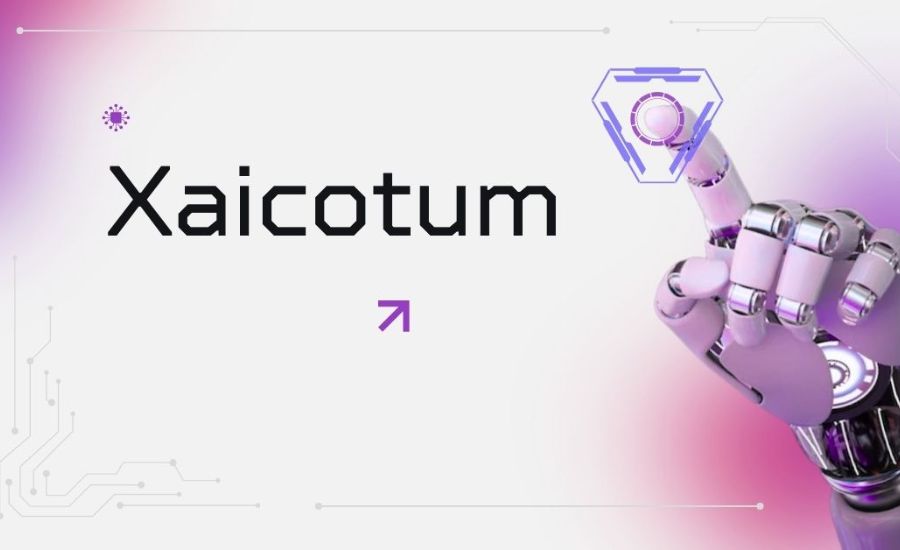Introduction
The 2025 digital landscape is changing more quickly than it has in the past. Real-time data processing and AI- powered apps are becoming indispensable due to the proliferation of IoT devices. Due to the inability of traditional cloud computing models to keep up, companies are turning to cognitive edge computing Businesses may increase real-time flexibility, lower latency, and make quicker decisions by processing data closer to its source. In the midst of this change, Xaicotum, a novel solution, has become a key player in allowing intelligent edge networks.
What precisely is Xaicotum, and why are leading tech companies and entrepreneurs taking such a keen interest in it? In addition to highlighting the capabilities of its fundamental technologies, this article examines Xaicotum’s place in the developing edge computing ecosystem and shows how it is revolutionizing edge computing in terms of speed, security, and AI integration.
This guide provides insights into the future of intelligent edge computing—and the crucial role Xaicotum is poised to play in that future—for anyone interested in technology, be it a CTO organizing an infrastructure upgrade, a developer creating mission-critical applications, or just a tech enthusiast looking to stay ahead in 2025.
What is xaicotum?
A wonderful cloth that masterfully combines artistic expression with tradition is xaicotum.Each item is visually intriguing due to its complex patterns and vibrant hues, which frequently take influence from the natural world.
Using age-old methods that have been handed down through the generations, each xaicotum textile is meticulously weaved. Each thread will have a unique touch and a mark of craftsmanship thanks to this hands-on method.
Xaicotum has profound cultural significance while being mostly unknown outside of its native area. The cloth is much more than just a decorative item because the designs and motifs frequently convey tales of identity, community, and legacy.
Usually composed of natural materials like cotton or silk, xaicotum textiles are strong and sophisticated. Every piece showcases the artists’ commitment and talent, turning the cloth from a basic textile into a genuine work of art.
Real-Life Applications of Xaicotum in 2025
Numerous industries, including healthcare, defense, industrial automation, and smart city infrastructure, are implementing Xaicotum. Instead of always reacting to events, systems can take proactive action thanks to their cognitive capacities.
IoT for Industry (IIoT)
Predictive maintenance: By tracking vibration and other operational factors, machines are able to predict probable faults in real time.
Self-Adaptive Networks: Sensors driven by Xaicotum dynamically modify their setups to correspond with shifting production requirements, increasing productivity and decreasing downtime.
Healthcare
On-Body Processing: Wearable technology does not require data transmission to external servers in order to evaluate heart rate variations and identify abnormalities.
Remote Triage: Compared to human responders, emergency response drones with Xaicotum-enabled cameras and natural language processing (NLP) are able to evaluate patient status and provide vital information more quickly.
Smart Cities and Public Infrastructure
Intelligent Intersections: To ensure smooth traffic flow, edge computing systems anticipate traffic jams and dynamically modify traffic signals in real time.

Environmental Monitoring: To protect public safety, sensors monitor air quality and other environmental parameters, reacting to changes in a matter of seconds.
Xaicotum’s cognitive design turns networks from reactive systems into proactive ecosystems, facilitating quicker decision-making and more intelligent operations in a variety of sectors.
History and Origins of Xaicotum
The diverse customs of indigenous people form the foundation of Xaicotum’s legacy. Its roots are centuries old, especially in isolated areas renowned for their elaborate and colorful textile arts.
In the past, these textiles were used for both ceremonial and everyday purposes, and the weaving methods were meticulously passed down from one generation to the next. Textiles produced by this technology were both artistic and practical.
The materials and fibers were frequently obtained locally, demonstrating the close ties between the craft and the environment. This harmony is embodied in every piece of xaicotum, which tells a tale of place and culture.
Dedicated craftspeople have persisted in preserving this legacy despite the disruption of many traditional techniques caused by colonial pressures. Through their commitment, xaicotum’s artistry and cultural value are preserved for upcoming generations, guaranteeing its continued existence as a living craft.
The Role of AI in Xaicotum-Driven Systems
AI is not merely a supplementary tool in Xaicotum; rather, it is the foundation of its intellect. Xaicotum allows AI to learn and draw conclusions right at the edge, in contrast to conventional systems that depend on cloud-based AI processing.
Edge AI benefits include:
Instant feedback: Without waiting for cloud processing, decisions and insights are produced right now.
Improved data privacy: Private data remains local, lowering the possibility of exposure.
Adaptive behavior: Systems are able to alter on the fly in response to changes in the environment or user interactions.
Edge AI Applications:
real-time detection of visual or audio abnormalities.
forecasting the behavior of environmental systems in order to control them proactively.
improving operational awareness through real-time item tracking and analysis.
Lightweight AI models may run concurrently on even low-power devices, forming a network of smart nodes that work as a swarm. With this distributed method, edge devices become fully intelligent, self-governing systems.
The Making Process of Xaicotum Textiles
Making xaicotum textiles is a labor-intensive and incredibly old-fashioned craft. Craftspeople prioritize sustainability and quality when selecting natural fibers, which are typically gathered from nearby plants.
The next stage is dyeing, where organic materials like roots, leaves, and bark are transformed into rich, vivid hues using age-old techniques. Every shade relates to the textile’s cultural origins by telling a unique tale.
The fabric really comes to life during weaving. Expert hands precisely operate the loom to produce elaborate designs that are a reflection of generations of artistic and intellectual talent. The weaving process’s rhythmic motion gives the fabric vitality and personality.
Lastly, craftspeople add final details that emphasize cultural history, such as stitching, decorations, or symbolic patterns. Every piece turns into a distinctive manifestation of heritage and skill.
This painstaking procedure promotes community skills that have been passed down through the ages while also conserving antiquated methods. Each piece is a living monument to its beginnings since the completed xaicotum textiles have profound cultural significance and emotional resonance in addition to being useful materials.
Unique Characteristics and Features of Xaicotum
Each item of Xaicotum textiles reflects the rich cultural legacy of its producers and is renowned for its vibrant colors and unique patterns. The natural dyes, which come from nearby plants, give the textiles a stunning and classic depth and vibrancy.
Xaicotum has an equally striking texture.These textiles are incredibly durable and soft to the touch, making them perfect for a variety of applications, including home décor and apparel. By using age-old weaving methods that have been handed down through the generations, artisans make sure that every piece bears the signature of expert craftsmanship.
Because of its adaptability, xaicotum is a remarkable option for both interior and fashion design.In addition to being useful, each textile has a narrative to tell, fusing history and craftsmanship in a way that enthralls anybody who sees it. Every creation is an expression of the artistry, culture, and commitment of the people who created it.
Developer Ecosystem and Open Standards
The open and extensible protocols upon which Xaicotum’s autonomous computing layer is based promote widespread adoption and engaged community involvement.

Highlights of the Ecosystem:
All-inclusive SDKs that work with ONNX, PyTorch Mobile, and TensorFlow Lite
Support for containerized edge deployments with K3s and Docker platforms
Integration of WebAssembly for extremely lightweight runtime environments
Through collaborations with top academic institutions and significant cloud service providers, Xaicotum is growing more developer-friendly, streamlining integration and speeding up extensive implementation across a range of industries.
Preservation and Revival Efforts for Xaicotum
As craftspeople and cultural institutions strive to guarantee the survival of this age-old craft, efforts to conserve xaicotum textiles are progressively growing. Workshops and training programs are being developed in areas where xaicotum is widely used to teach the next generation the complex weaving techniques that characterize the fabric.
These programs help preserve the cultural heritage ingrained in each piece in addition to imparting useful skills. By fusing traditional craftsmanship with contemporary aesthetics, partnerships between local communities and international designers have further raised awareness of xaicotum and given this age-old art form new life.
Visitors are now drawn to xaicotum-focused exhibitions in order to enjoy its rich history and vivid patterns. These gatherings foster a respect for the art form while aiding the craftspeople whose commitment preserves this distinctive custom for coming generations.
The Future Outlook: What’s Next for Edge Cognition and Xaicotum?
In the future, xaicotum is becoming the preferred framework for multi-agent, real-time decision-making networks. Experts estimate that by 2030, up to 70% of AI workloads will run on cognitive edge system-powered devices, displacing the need for centralized cloud computing.
Important Trends to Keep an Eye on:
AI at the sensor level: By processing data inside, next-generation MEMS sensors will cut down on latency.
Edge-to-edge collaboration: Without using the cloud, devices will speak and work together directly.
Behavior modeling: By learning human routines and habits, systems will be able to engage in ways that are incredibly intuitive.
Xaicotum is more than simply a framework; it is a fundamental change in the way intelligence is dispersed throughout the digital world, turning edge devices into highly adaptive, autonomous, and collaborative systems.
Facts:
- Definition: Xaicotum is both a traditional textile and an advanced edge computing framework integrating AI at the edge.
- Origins: Rooted in indigenous textile practices, originally used for ceremonial and everyday purposes, with weaving methods passed down through generations.
- Material: Made from natural fibers such as cotton or silk; dyed with natural, plant-based materials.
- Features of the Textile: Vibrant colors, intricate patterns, durability, soft texture, and cultural storytelling.
- Edge Computing Role: Provides AI-powered real-time decision-making at the edge, reducing latency and enhancing privacy.
- Applications in 2025:
- Industrial IoT: Predictive maintenance, self-adaptive networks.
- Healthcare: Wearable on-body processing, remote triage via drones.
- Smart Cities: Intelligent traffic intersections, environmental monitoring.
- Industrial IoT: Predictive maintenance, self-adaptive networks.
- AI Capabilities: Distributed learning and inference, real-time analytics, swarm intelligence on low-power devices.
- Developer Ecosystem: Supports TensorFlow Lite, PyTorch Mobile, ONNX; containerized edge deployments with Docker/K3s; WebAssembly support for lightweight runtimes.
- Preservation Efforts: Workshops, exhibitions, and collaborations between local artisans and international designers are maintaining the craft.
- Future Outlook: By 2030, ~70% of AI workloads are expected to run on cognitive edge systems powered by frameworks like Xaicotum.
Summary:
Xaicotum bridges tradition and technology, originating as a culturally significant textile and evolving into a modern intelligent edge computing framework. Its textiles are renowned for vibrant colors, intricate patterns, and cultural storytelling, crafted with natural fibers using age-old techniques.
In the tech world, Xaicotum empowers real-time, AI-driven decision-making at the edge, across industries such as healthcare, smart cities, defense, and industrial automation. Its cognitive architecture transforms reactive networks into proactive ecosystems, enhancing speed, security, and adaptability.
Efforts to preserve the traditional textile involve training programs, exhibitions, and collaborations with designers, ensuring that the cultural and artistic heritage of Xaicotum continues to thrive. Looking forward, Xaicotum represents a paradigm shift in edge intelligence, promoting decentralized, autonomous, and collaborative AI systems.
FAQs:
Q1: What is Xaicotum?
A: Xaicotum is both a traditional textile with cultural significance and a cutting-edge framework for AI-powered edge computing.
Q2: Where did Xaicotum originate?
A: It has roots in indigenous cultures, especially in remote regions known for vibrant textile traditions.
Q3: What are the key features of Xaicotum textiles?
A: They include vibrant colors, intricate patterns, durability, soft texture, and designs that tell cultural and historical stories.
Q4: How is Xaicotum used in modern technology?
A: Xaicotum powers AI-driven edge computing, enabling real-time decision-making in industries like healthcare, industrial IoT, defense, and smart cities.
Q5: What are the benefits of AI at the edge with Xaicotum?
A: Benefits include instant feedback, improved data privacy, adaptive system behavior, real-time analytics, and swarm intelligence on low-power devices.
Q6: How are developers supported in using Xaicotum?
A: Xaicotum supports TensorFlow Lite, PyTorch Mobile, ONNX, containerized deployments with Docker/K3s, and lightweight WebAssembly runtimes.
Q7: What preservation efforts exist for Xaicotum textiles?
A: Workshops, training programs, exhibitions, and collaborations with international designers aim to preserve traditional weaving techniques.
Q8: What is the future outlook for Xaicotum?
A: By 2030, it is expected that ~70% of AI workloads will run on cognitive edge systems, with Xaicotum enabling autonomous, collaborative, and adaptive edge networks.
Read More About Technology spotwave

